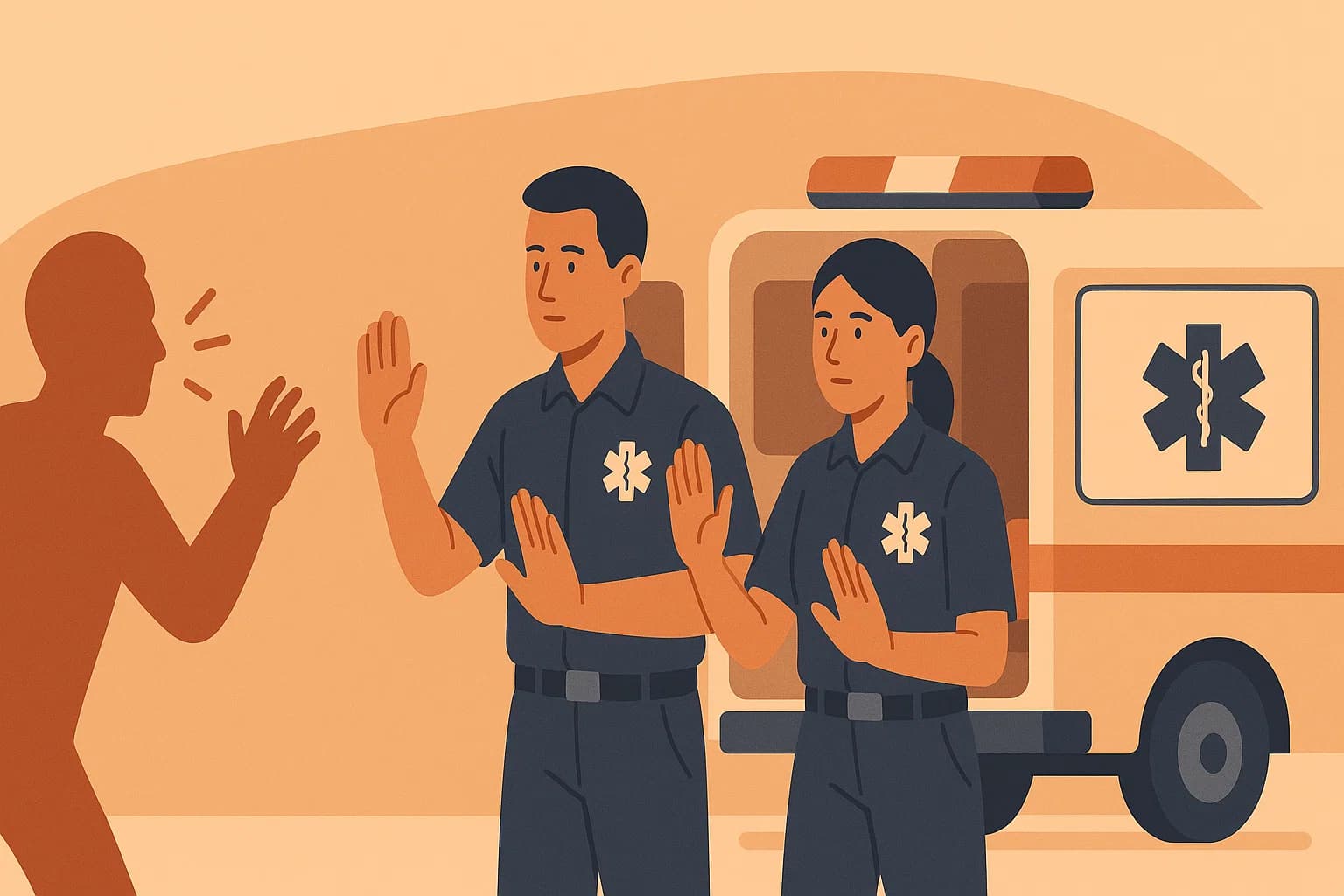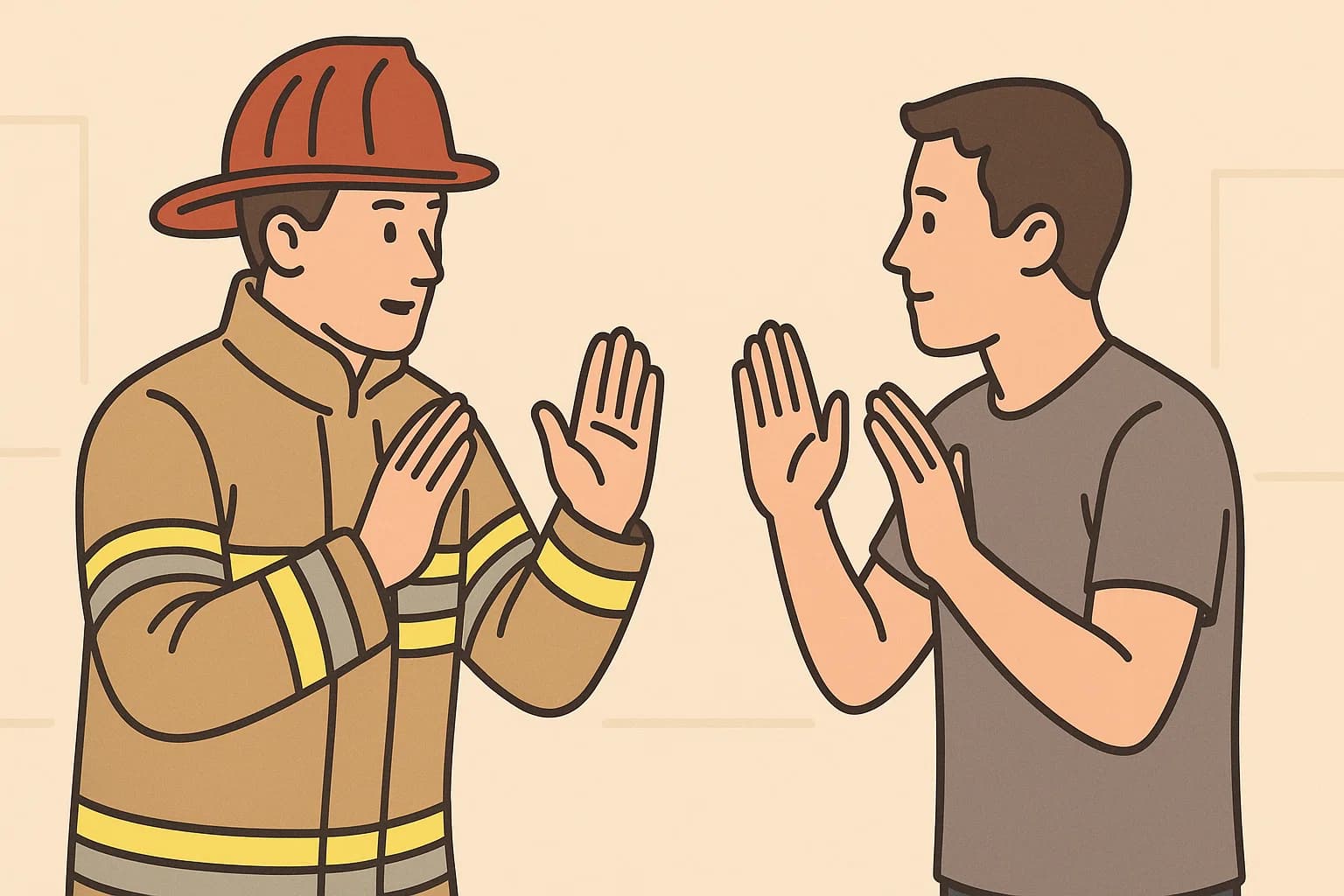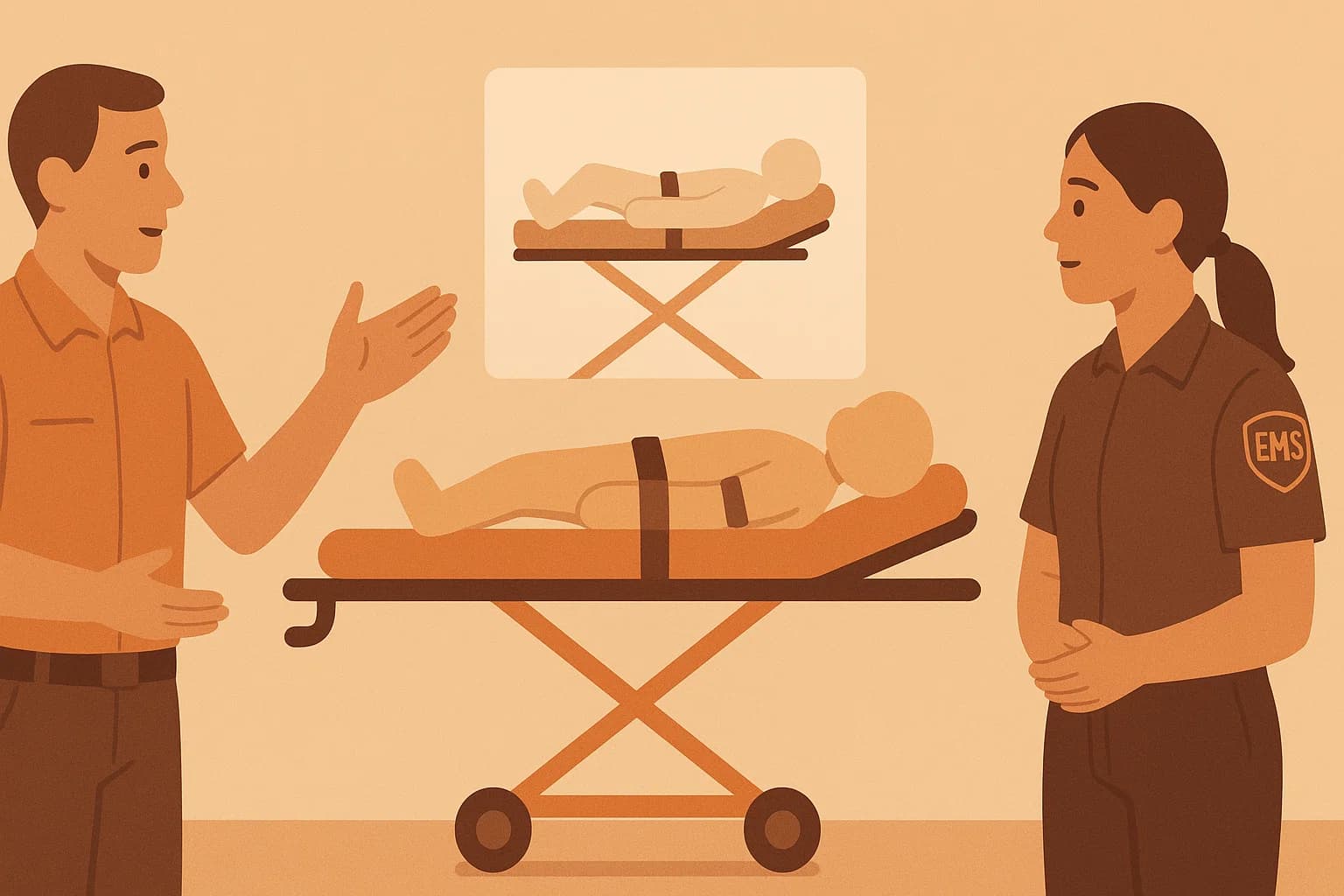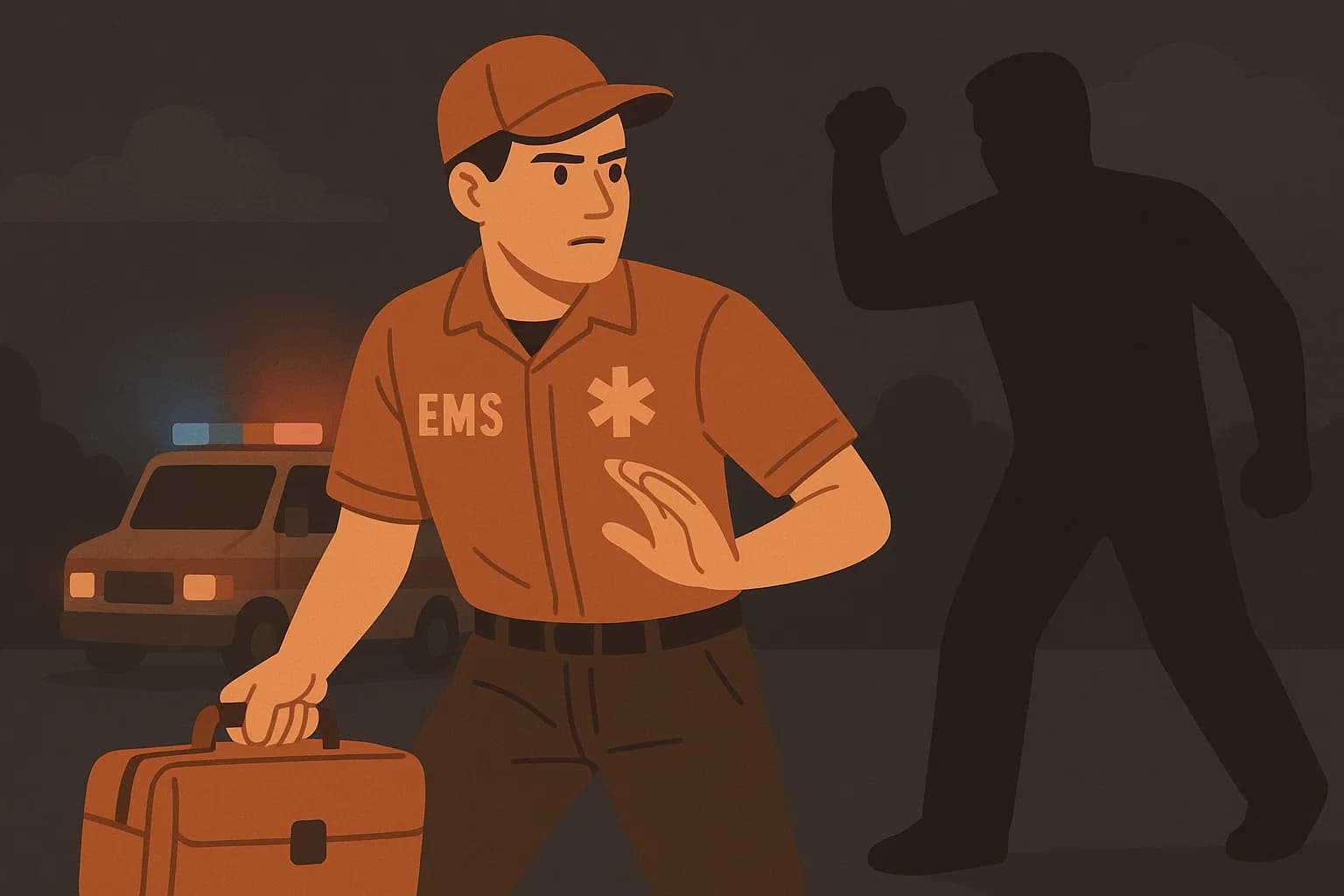When most people think of EMS or fire responders, they imagine professionals rushing in to save lives — racing into burning buildings, stabilizing accident victims, or performing life-saving care in the back of an ambulance. What many don’t realize is that those same responders are increasingly becoming the targets of violence themselves.
The threats aren’t only from the environment or medical emergencies. They are from patients, bystanders, and sometimes even the very people responders are there to help.
FOX4 News Kansas City recently reported on the tragic stabbing death of Graham Hoffman, connecting it to a nationwide crisis: 80% of EMS workers reported experiencing a physical assault in 2024. That means four out of five medics have been hit, kicked, punched, stabbed, or otherwise attacked while simply trying to help.
The Scope of the Crisis
Violence against first responders isn’t rare — it’s routine. Every shift, EMS and fire personnel face not just medical emergencies, but the real risk of human violence.
- Nationwide trend: Assaults against frontline workers are climbing at alarming rates.
- Local tragedies: The loss of Graham Hoffman underscores the deadly consequences of unprepared encounters.
- Every responder at risk: From rural towns to large urban systems, violence does not discriminate.
This reality has left many responders asking: If we don’t prioritize our own safety, how can we safely care for others?
The Hidden Toll
The statistics paint a grim picture, but the numbers don’t capture the personal impact. Many responders carry scars that are invisible — the anxiety of approaching a chaotic scene, the hypervigilance during patient contact, the knowledge that a routine call can turn violent in seconds.
For some, the effects are physical: broken bones, concussions, knife wounds. For others, the damage is psychological: post-traumatic stress, burnout, and the constant fear of being blindsided.
This hidden toll contributes to high turnover in EMS, already a profession struggling to retain providers. It also threatens community safety when experienced medics leave the field prematurely.
Why Training Matters
At VEST First Responder, we believe stories like this show why training must evolve. Responders cannot rely on luck or goodwill alone — they need structured preparation to handle violent encounters.
- Verbal De-escalation – Clear, calm communication tactics that defuse situations before they turn physical. Responders should know how to use tone, body language, and word choice to reduce tension.
- Practical Self-Defense – Simple, effective defenses against grabs, strikes, and edged weapons designed not for domination, but for survival and safe disengagement.
- Situational Awareness – The ability to quickly recognize danger cues and exit before escalation occurs. Prevention is always the best defense.
This training isn’t about turning medics into law enforcement. It’s about giving them the tools to go home safe at the end of their shift.
The Bigger Picture
The danger of responding first is real — but it’s also preventable. Agencies that invest in de-escalation and self-defense programs consistently report:
- Fewer injuries among their personnel.
- Improved confidence when entering volatile scenes.
- Better patient outcomes because providers can focus on care instead of fear.
Safety and patient care are not competing goals. In fact, they depend on one another. A secure provider is a better provider.
Addressing Concerns
Not everyone agrees on how to tackle this crisis. Some leaders worry that teaching self-defense could blur the line between medical responders and law enforcement. Others fear it may encourage unnecessary confrontation.
But those concerns don’t match what frontline providers say. The overwhelming message from EMS professionals is simple: we don’t want to fight — we want to survive.
Structured training that prioritizes verbal de-escalation first and introduces physical defense only as a last resort strikes the right balance. It empowers responders to de-escalate whenever possible, disengage when necessary, and return home safely.
A National Crisis With Local Impact
What makes violence against responders especially challenging is its unpredictability. The patient who calls for help may lash out in fear or confusion. A bystander under the influence may see responders as a threat. Mental health crises, substance abuse, and heightened tensions in communities all increase the risk.
And while some high-profile tragedies make the news, countless smaller assaults go unreported. A shove here, a spit there, a punch in the ribs — many providers brush these off as “part of the job.” But when violence becomes normalized, the culture of safety breaks down.
Changing this reality requires acknowledging the scope of the problem and demanding systemic solutions, not just personal resilience.
What the Research Shows
Several studies support this change:
- JACEP Open (2022): Nearly 50% of EMS professionals did not escape escalating threats in simulated scenarios. De-escalation and escape training were identified as critical needs.
- Injury (2018): Assaulted medics reported that specialized training and situational awareness could have prevented many violent incidents.
- NAEMSP Position Statement (2021): Recognized the risks of dealing with combative patients and endorsed proper training and rapid intervention strategies.
- NAEMT Report (2019): EMS providers themselves overwhelmingly asked for more de-escalation and self-defense training.
The evidence is clear: structured, ongoing training reduces risks and saves lives.
Final Thoughts
Violence against first responders is a national crisis, and ignoring it is no longer an option. Stories like Graham Hoffman’s remind us of the stakes — and the urgency for change.
At VEST First Responder, our mission is clear: equip responders with the skills to survive violent encounters, so they can continue saving lives.
Because those who protect us deserve to be protected, too.
What do you think?
Share your thoughts with us — your feedback helps shape the future of first responder training.
Get in TouchKeep reading



